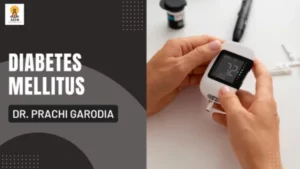Diabetes Mellitus : The Management of Yoga Therapy

What is Diabetes Mellitus: The Management of Yoga Therapy?
This specialized course focuses on the role of yoga in managing and potentially reversing the effects of diabetes. Participants will learn how to apply specific yoga techniques to regulate blood sugar levels and enhance insulin sensitivity.
The course covers tailored yoga practices that can be integrated into treatment plans, supporting overall health and effectively managing diabetes-related symptoms. It is designed for practitioners aiming to use yoga as a complementary therapy for diabetes management.
Key Benefits of Yoga for Diabetes Management:
- Blood Sugar Regulation: Learn yoga techniques to help control blood sugar levels.
- Improved Insulin Sensitivity: Enhance the body’s response to insulin through specific practices.
- Symptom Management: Address common diabetes-related symptoms with targeted yoga interventions.
- Holistic Health: Promote overall health and well-being through a comprehensive yoga approach.
Course Content Overview:
Yoga and Diabetes: An Overview
Understand the relationship between yoga practices and diabetes management.
Specific Yoga Techniques for Diabetes
Learn postures and breathing exercises that aid in regulating blood sugar levels.
Integrating Yoga into Diabetes Care Plans
Develop skills to incorporate yoga into comprehensive diabetes management plans.
Case Studies and Practical Application
Review real-world case studies to see the effectiveness of yoga in managing diabetes.
Step-by-Step Guide to a Yoga Practice for Diabetes Management
Preparation:
- Choose a quiet space and gather necessary yoga props.
- Ensure the patient has eaten and hydrated appropriately before beginning.
Yoga Sequence:
- Start with gentle warm-up exercises to prepare the body.
- Perform specific postures that target the pancreas and improve circulation.
Breathing Exercises:
- Introduce pranayama techniques that help regulate blood sugar levels.
- Focus on deep, controlled breathing to enhance relaxation and insulin sensitivity.
Relaxation and Meditation:
- End the session with relaxation techniques and guided meditation to reduce stress.
- Encourage mindfulness practices to support emotional well-being.</divp
Aftercare:
- Monitor blood sugar levels before and after the practice to assess effectiveness.
- Maintain a consistent yoga routine for best results.
Tips:
- Consult with a healthcare provider before starting any new yoga regimen.
- Adjust practices based on individual needs and responses.
Explore the potential of yoga therapy in managing diabetes with our comprehensive course and support your patients’ journey to better health.
